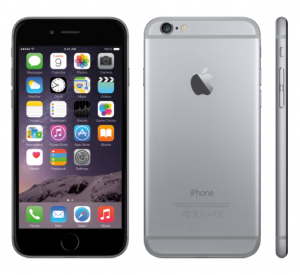Why Apple’s $25 Settlement In The ‘Batterygate’ Lawsuit Isn’t Worth My Time (Or The Money)
COMMENTARY: 10.06.20 – Today is the last day to submit a claim online to take part in the settlement for the class action lawsuit against Apple for its performance throttling fiasco which slowed down some older iPhones but the piece of the pie is so small that this writer is just going to pass on the chump change.
Back in 2017, December to be exact, Apple revealed that it had been throttling the performance of older iPhone models to prevent unexpected shutdowns of the device. Dubbed “Batterygate” by the media, a class action lawsuit ensued which claimed wrongdoing by the Cupertino, California-based company.

**AD: Looking to upgrade your old Apple smartphone to a newer model? Before you make a purchase, consult the exclusive and award winning iPhone price tracker on MacPrices for the lowest prices and latest deals and discounts. Pricing updated daily, seven days a week!
Apple has agreed to settle for $310 million ($500 million maximum) in order to end litigation and that’s a large sum of money that will cost the company a pretty penny (so to speak). However, the highest amount the average class member in the lawsuit who submits a claim to take part in the settlement will receive is only $25. And that amount could be even less depending on the number of participants who file claims.
Is it even worth your time to participate? I know it’s not worth mine.
As a former owner of an original iPhone SE from 2016 (purchased that April… I’ve since sold it and upgraded to the new second generation model that came out earlier this year) my old phone would have qualified for the settlement that Apple is paying out to class members in the lawsuit against the company. However, considering that I forked over $399.99 to AT&T for the device, Apple’s measly $25 doesn’t even cover the amount of sales tax that I paid (10% which is $39.99) on top of the retail price.
If anything, Apple could have appeased iPhone owners affected by “Batterygate” with a reimbursement for those of us who, like myself, went to the Genius Bar to take part in the $29 battery replacement program — something the company offered for a limited time back in 2018 in response to customer complaints over the performance throttling — but that would mean an additional $4 per class member and an increase in the total settlement money.
While my battery was well within the acceptable threshold for performance per Apple’s standards (at or above 80%), having had the device for 2.5 years, and, seeing as how I wasn’t planning to upgrade anytime soon (since, at the time, the second generation iPhone SE was still a myth), I wanted to breathe new life into my iPHone by getting its battery replaced. As luck would have it, the Genius Bar totally damaged my phone during the battery replacement process so I got a brand new like-for-like replacement out of the deal with a fresh battery to boot.
Even with that, Apple’s $25 settlement still doesn’t cover the $29 (plus sales tax) that I had to pay to get the service done — never mind that it was already a savings of $50 off the regular price — not to mention the gas for the drive to Apple, the time spent waiting for them to perform the swap, etc. (as they say, time is money).
However, if you’re so inclined to take advantage of the $25 settlement for your older iPhone (which doesn’t provide any consolation for those who shelled out hundreds of dollars to upgrade their device because of the slowdown in performance), by all means, have at it! As I previously mentioned, today, October 6, 2020 is the last day to submit a claim online. If you owned an iPhone 6, 6 Plus, 6s, 6s Plus, 7, 7 Plus, or SE (first generation), you are a class member in the lawsuit against Apple.
To qualify for the payout, your phone had to have experienced diminished performance and specifically, your iPhone 6, 6 Plus, 6s, 6s Plus, or SE (first generation) had to have had iOS 10.2.1 or later installed on the device before December 21, 2017 — the day after Apple admitted to “Batterygate” — and iOS 11.2 or later for the iPhone 7 and 7 Plus (the versions of the software which had the performance throttling).
The caveat? In order to submit a claim online, you have to know the serial number of your device and enter that information into the electronic form on the claims website. So, if you sold your phone and don’t have access to the serial number on hand, you’re out of luck because the alternate method would have been to provide documentation (e.g., proof of purchase) and mail that in but it had to have been postmarked by today’s date.
